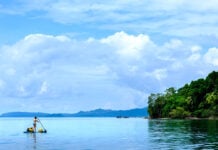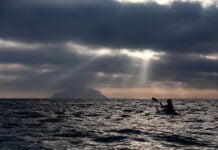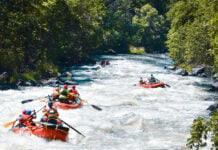From a paddler trapped underwater and a river so polluted it literally caught fire, to creatures and craft rebounding from the edge of extinction, we celebrate seven tales of extraordinary comebacks.
Meet The Survivors: Celebrating 7 Tales of Extraordinary Comebacks
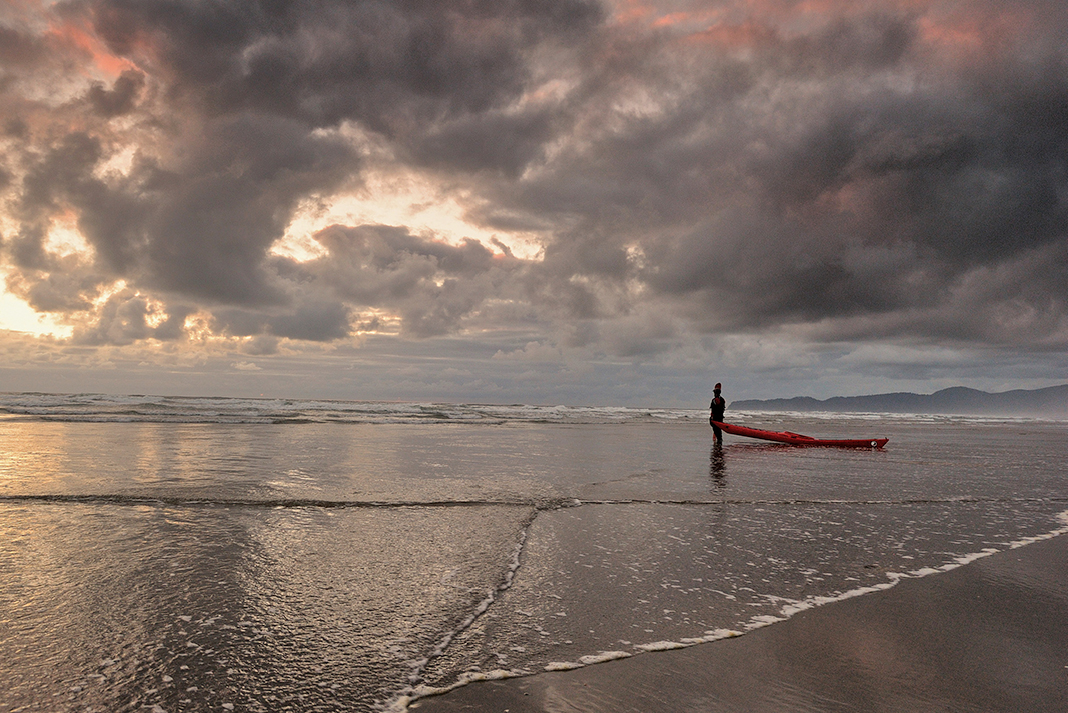
1 Bereaved
Paul Kuthe keeps paddling past tragedy
Paul Kuthe lost his father to a heart attack on the river while whitewater kayaking together. He was just 12. Rather than turning his back on the water, Paul was inspired by his father’s love of canoeing and kayaking to pursue life with a paddle in hand, from class V West Coast whitewater, to the endless surf of Oregon’s Shi-Shi Beach.
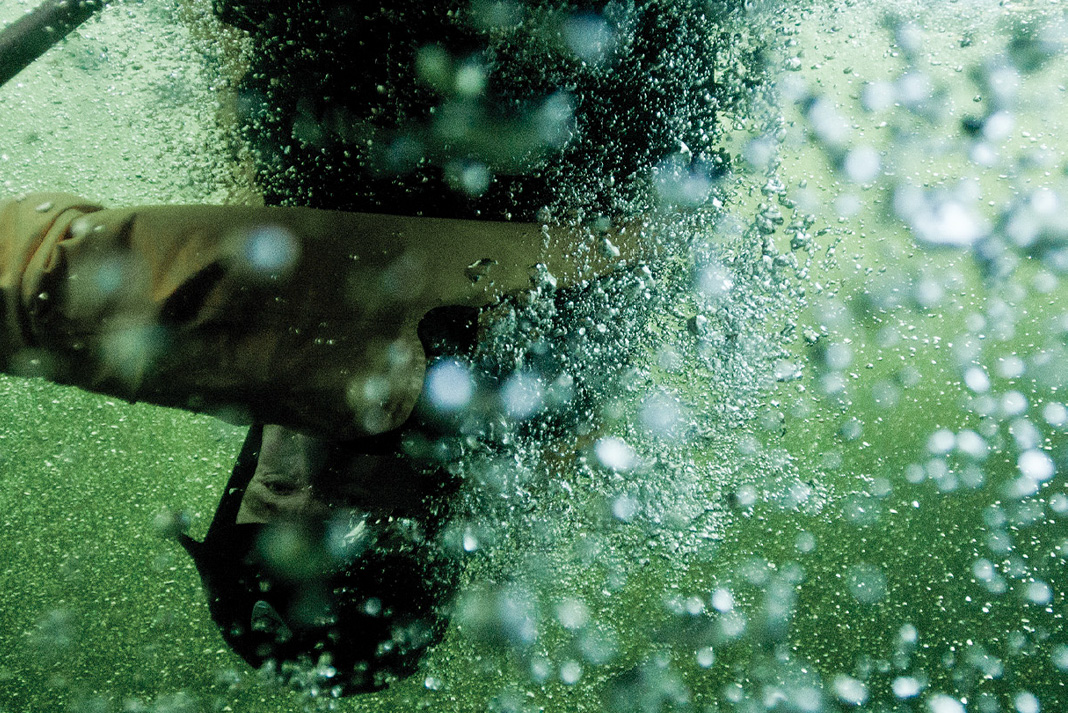
2 Stuck
Trapped in his kayak underwater, Rowan Gloag finds time stands still
Forty-seven seconds doesn’t seem like a long time, but it felt like an eternity that day.
It was late October and I was in Tofino with friends for our annual autumn surf trip. It was a classic West Coast fall day—cold, wet and windy. Usually, I love these days but today was different. I was frustrated, things were not going my way. I had already endured countless beatings, broken a paddle and nearly swam.
Common sense should have told me to give up and go in for a beer. But I was too frustrated to quit, and despite being tired, I stormed back up to our camp, grabbed a new boat, and headed back to the grey and cheerless beach.
It took me five minutes of shifting and squeezing to force myself into the small, plastic surf boat I had hastily selected. I paddled back out through the breakers to try and regain some kind of control over my day. Nothing changed. The first wave ran me over. After a few more beat-downs, I realized that my head just wasn’t in it, I wasn’t focused, and I needed to get off the water. So I headed in.
With fixed fins mounted in the hull of the surf boat, I couldn’t run it up on the beach. I paddled into waist-deep water, popped my skirt off, put my hands on the coaming and pushed…nothing. There was no movement at all. I was stuck. As I pushed again, I felt a wave lifting the stern. I reached down to grab my paddle but it had vanished. It must have slipped off my boat while I was struggling to free myself and now it was gone. The wave picked me up, dumped me on my side and I capsized.
I pushed harder. Still nothing. I pushed again, nothing. I reached down with one arm and pressed off the sand to catch a breath. The boat started to fill with water as I slipped back under. I pushed with everything I had. I could hear my groans vibrating in my head under the water.
I reached for the sand again, pushed and came up for a half-breath. Now I could feel my fingers dragging ineffectively along the bottom, losing traction as I was pulled out to sea. I lost my grip on the sand and slid under a third time.
Now I fully understood the severity of my situation. If I couldn’t get out now, I wouldn’t get another chance. Seawater would flood my lungs and I would drown just a stone’s throw from the beach.
I pushed with every ounce of strength and desperation. My hips slid a bit as my right knee twisted painfully. It hurt, but it was working. Feeling the tissues in my knee starting to tear, I gave a final determined push and popped free.
I took a ragged, grateful breath and looked around. It was still raining, still grey; my friends were still enjoying the surf. I felt strangely calm—neutral, not happy, not sad, just calm. Kim and Whirlson were on the rocks filming. As my eyes caught theirs, my friends yelled out, “What are you doing?”
Couldn’t they see the chaos? Didn’t they know what had happened? What had very nearly happened? I didn’t know how to respond. So I yelled back, “Going in for a beer.”
When I got home I reviewed the footage of the trip and there it was… 47 seconds of me splashing around in waist-deep water. The video didn’t look like much, just the hull of my kayak shifting around in the surf. But I can tell you this: it was a very different experience below the surface.
Forty-seven seconds doesn’t seem like a long time, but it was nearly an eternity that day. —Rowan Gloag
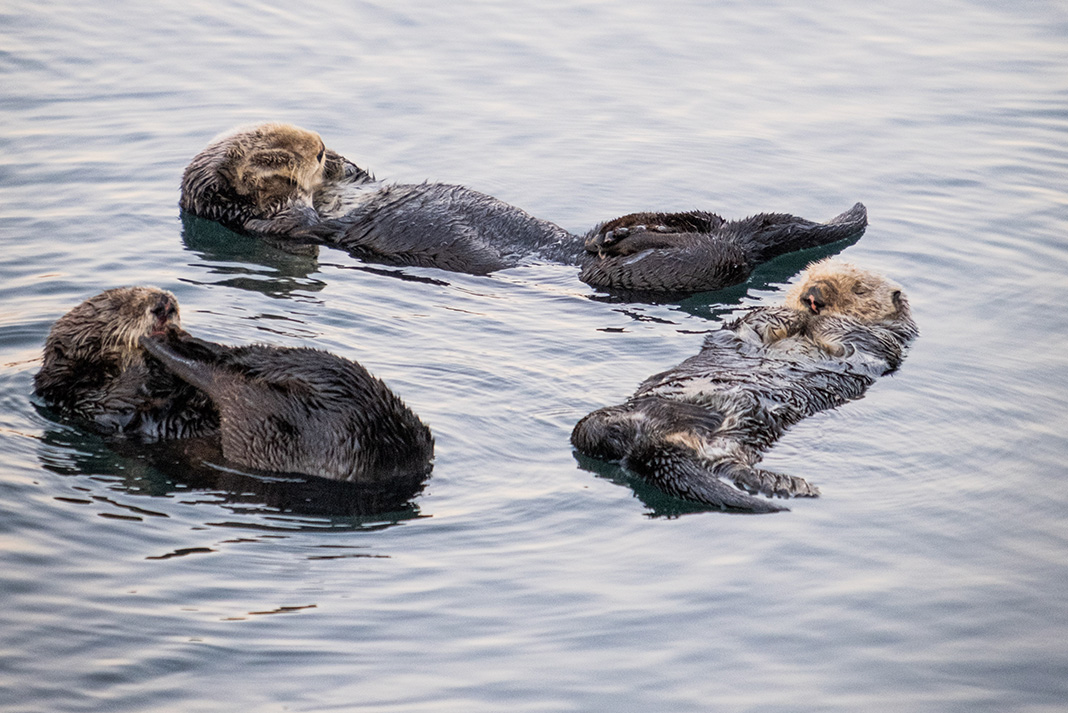
3 Endangered
Sea otters rally from edge of extinction
Environmentally speaking, our species is not doing well. In the past four decades, half of all the wildlife on earth has vanished; there’s talk of us triggering the planet’s next mass extinction.
There is now hope we can turn things around, and good reason to try re-wilding the earth. Witness the remarkable return of sea otters to the Pacific Northwest, where the luxuriously furred creatures are rebounding in a relative jiffy. From a North American population of 300,000-ish when Captain James Cook started trading pelts on Vancouver Island in 1778, the cuddly mammal that shucks shellfish on its belly was hunted to near-oblivion. By the 1920s, otters were almost completely wiped out from California clear to Alaska and the global population plummeted to fewer than 2,000.
Hopeful biologists reintroduced small numbers of otter in the late ‘60s, and with legislation to stop hunting and the coastal environment still relatively pristine, the new couples proliferated quickly. At last check, British Columbia populations had rebounded to 5,000; in Alaska, 12,000—and rapidly counting.
But there’s more, thanks to the sea otter’s linchpin role. Saving the otter triggered a chain reaction. Otters eat sea urchins, urchins eat kelp, and kelp is the basis of a finely balanced ecosystem. The wild West Coast as we know it isn’t how it’s supposed to look—it’s an urchin barren, a dead zone where unchecked urchin populations have clearcut the kelp forests.
Bringing back the otter puts the urchin back in its place. The kelp returns along with all the fish, animals and birds right on up the food chain to soaring bald eagles. By fixing our otter mistake, we’re gradually flipping the on switch for a complete near-shore ecosystem.
Bonus: we’re also making a friendlier environment for ourselves. Because as any open coast paddler knows, kelp helps dampen the waves. —Tim Shuff
4 Forgotton
The kayak is our sport’s greatest survival story
Before there was land, there was water. Before there were creatures that walked, they paddled about. Before the wheel, there was the boat. For those of us born pre-digital, there is deep comfort in a basic tool that is fundamentally unchanged from something in Grandpa’s shed, or his great-grandpa’s distant memory.
When the first restless, striving Europeans brought the wonders of the modern world to indigenous peoples, our neighbors in the North already had this marvelous craft called a kayak. Born of a watery planet and an elemental need to move, it’s an idea as old as fire and wood, sinew and skin. The aquatic equivalent of walking, perfectly calibrated to the speed of thought.
Like popcorn and chocolate, potatoes and peanuts, the first peoples gave us this happy invention. It takes us to dream places, relaxes us from the world our anxious genius has wrought, and cradles us like Moses when that world fails.
The kayak has floated since time immemorial. Then, suddenly, it declined when its inventors and their traditional way of life were decimated. Remembered and cherished by a few, and later embraced by recreationists, it’s now been on the upswing for half a century. Consuming nothing to operate, depreciating slower than inflation boosts its resale, kayaks are practically free to paddle and own.
As long as there are people and water, the kayak will thrive. And in our most utopian dreams, the kayak will dominate. —Tim Shuff
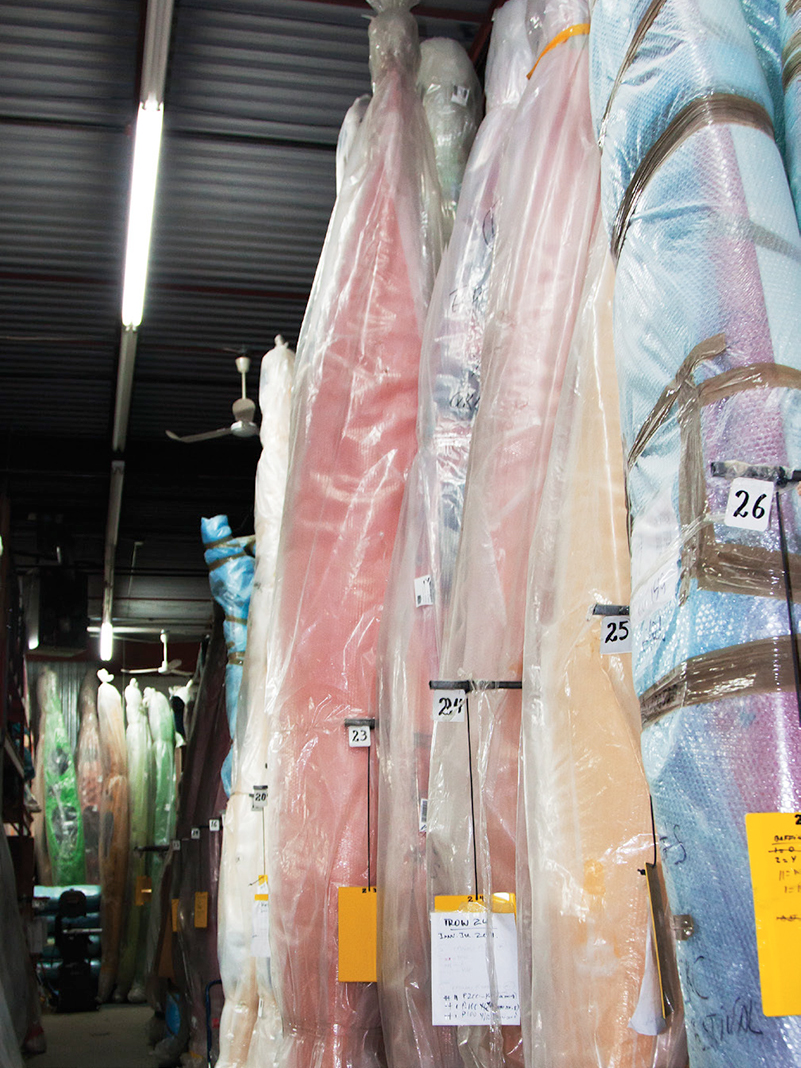
5 Bust
After shutting its doors, Boréal Design returns as an industry heavyweight
Boréal Design was a well-respected, Canadian-based brand in the challenging longboat sea kayak market when it went into receivership in early 2012. Its wide-ranging lineup—including the aggressively rockered Vaag ocean playboat and unique, reverse hard-chine Greenland-style designs like the Baffin and Ellesmere—had a loyal following among dedicated sea kayakers, particularly in eastern Canada and Scandinavia where the brand had a solid foothold and a promising future.
But, the company’s bankruptcy halted production at Boréal’s Quebec City manufacturing facility, put long-time employees out of work, shut down its local retail store, and froze the existing inventory before it shipped to dealers, jeopardizing not only the 2012 season but the very existence of the 21-year-old brand.
Marc Pelland, president of Kayak Distribution, heard that various bidders were stepping up to fight over Boréal’s vital organs—manufacturers wanted the molds; industrial equipment dealers, the machinery; kayak dealers, the inventory.
“I’m not sure how that would have turned out, or if it would have still been Boréal Design as people understand it,” muses Pelland. There were no other serious bidders to revive the company in its entirety. The remaining inventory might have been blown out in a sale. The factory and retail store would have remained shuttered.
Kayak Distribution stepped in to resuscitate the brand—a big leap for Pelland’s company, which at the time only manufactured Riot and Azul Kayaks—outmaneuvering other bidders to buy Boréal intact.
“It’s not like a whale came up and ate a minnow. We’re a small company with a small staff. It was a huge chunk for us to take on,” says Pelland. “The advantage is we have a much faster decision-making process than a large company.”
Kayak Distribution’s next move was to scramble to save the brand’s 2012 season, shipping boat orders to dealers out of the existing inventory, rehiring employees and transitioning production to its own factories.
Pelland isn’t sure what drove Boréal to bankruptcy, but suggests that the company was on a downward trajectory. “The products were very high quality but for many they were kind of overpriced. Retailers were going, ‘Well, I love the product but it’s too expensive for my market. People won’t pay for it.’ And this gap was growing so they had reached what they could do retail-wise.”
Kayak Distribution positioned Boréal Design as a premium brand in its lineup, but at more attractive prices. Now all Boréal Design boats are built overseas—plastics at Kayak Distribution’s own brand new factory near Shanghai, composites in Estonia—and pushed out through an extensive global distribution network. Kayak Distribution recently placed Boréal Design in a new market, Russia, and vastly stepped up distribution in Australia.
Last year, Kayak Distribution purchased all of Seaward Kayaks’ thermoform molds and is quickly integrating those designs into its Riot and Boréal brands. Sales manager Mark Hall says Boréal will also release two new 17-footers for 2016. All this while maintaining two of its own Boutique Boréal Design retail stores back home in Quebec City and Montreal, employing some of the original staff to nurture sea kayaking’s local roots.
By the year after next at the latest—five years after the brand threatened to disappear forever—Pelland estimates Boréal Design will be bigger in every way than it was in its pre-bankruptcy heyday.
“We stepped up and made a big bet on this company whose products we thought were great. We kept the boat afloat, worked like hell and transitioned it into a competitive company that we feel can be a global leader.” —Tim Shuff
6 Stranded
One bad decision leaves Jaime Sharp clinging to the rocks with no escape
Jaime Sharp knew he was in trouble the moment he realized the wave would catch him right in the gap he had entered amongst the jagged rocks.
Two and a half hours earlier, Sharp and his two companions—all experienced rough water paddlers—had departed under clear skies and light winds for a day trip around the imposing headland of Oregon’s Cape Falcon.
With fine August weather and no specific plans to rock garden or surf along the way, Sharp wore fleece-lined shorts and light layers under his anorak and chose to paddle barefoot—common kayaker dress code in his native New Zealand. As always, he also wore his ditch kit with extra dry clothes, snacks, cell phone and VHF radio. He buckled his helmet to the back deck, just in case.
It was still there when he followed fellow Kiwi kayaker Tara Mulvany into the gap.
“When I saw the wave, my first thought was ‘I’m not wearing a helmet, I’m dead,’” Sharp recalls. Despite the wave’s modest size—Sharp estimates its height at four or five feet—his position on the shallow reef, surrounded by sharp volcanic rocks and sea stacks, made him extremely vulnerable. With just a foot of water under his hull, Sharp was certain he’d be knocked unconscious if he capsized.
“I ended up bongo sliding [side surfing], trying to protect my face and keep my body between the rocks and my head. Next thing I know, I’m wedged up against a sea stack, with the wave sucking out and the boat locked upside down.
“I was totally gobsmacked that I managed to get washed up on the rocks without even a scratch. I tried a roll but the boat was jammed. The next wave in the set would be bigger, and I couldn’t risk getting smeared across the rocks again without a helmet. I dropped out of my kayak into a pool of water just as it hit.”
After several attempts to retrieve his boat—each scramble leaving him more bruised and battered—Sharp abandoned the kayak and climbed to temporary safety on a sea stack. With his companions unable to get close enough to assist, Sharp made the decision to call the Coast Guard on his VHF. It was now 20 minutes since his capsize.
When a nearby fishing vessel responded and reported that it could not safely approach closer than half a nautical mile, the Coast Guard told Sharp that a helicopter was on its way. An hour later, the bird arrived.
Watching the Coast Guard Aircrew’s rescue footage, Sharp can be seen hunkered atop an almost impossibly craggy and precipitous spire, framed by larger, similarly toothy black rocks. The eight-foot swell explodes as it runs up against Cape Falcon’s basalt sentries, sending white plumes above Sharp’s head.
“I don’t see any other way of getting this guy off of here,” a member of the aircrew can be heard saying as rescue options are discussed and a rescue swimmer on a hoist is mobilized. He goes on to describe the operation as “a bit of a risky evolution” for both the rescuer and the “survivor.”
The view over the rescue hoist operator’s shoulder out the heli door is mesmerizing: whitewater swirls around the dark crags, Sharp a mere speck of red Gore-Tex. After three attempts, they snatch him from the rocky perch, haul him up the cable to the heli, and a pair of rescuers drag him like a slab of Angus beef across the chopper’s threshold and into the safety of its cabin. Sharp is obedient, almost limp, allowing himself to be manipulated onto a bench for the ride back to Tillamook Bay.
He was surprised to receive praise, rather than a scolding, from the Coast Guard technicians. “As far as they were concerned, I had all the appropriate gear to deal with that environment.”
Sharp is less forgiving of himself. The simple act of putting on his helmet before entering the gap could have given him the protection to attempt a second roll after his capsize. Similarly, his lack of immersion gear ruled out a long swim in the 60°F water to the fishing boat or the other kayaks.
Sharp’s biggest takeaway from his close call relates to judgment, rather than equipment. Assumption and complacency, he says, were the chief errors that day.
“When you’re paddling with strong peers, you sometimes assume that those people are making a good decision, and you don’t necessarily have to make your own. If I’d assessed the situation myself, made my own choice, waited and noted where my safe zones were—rather than just following Tara through the reef—none of this would have happened.”
As skills and experience increase, so do comfort and confidence in more challenging environments. “You can become overly comfortable in moderate conditions and not take the necessary precautions,” says Sharp. “You forget that all it takes is that one unexpected thing and you’re out of your boat.” —Virginia Marshall
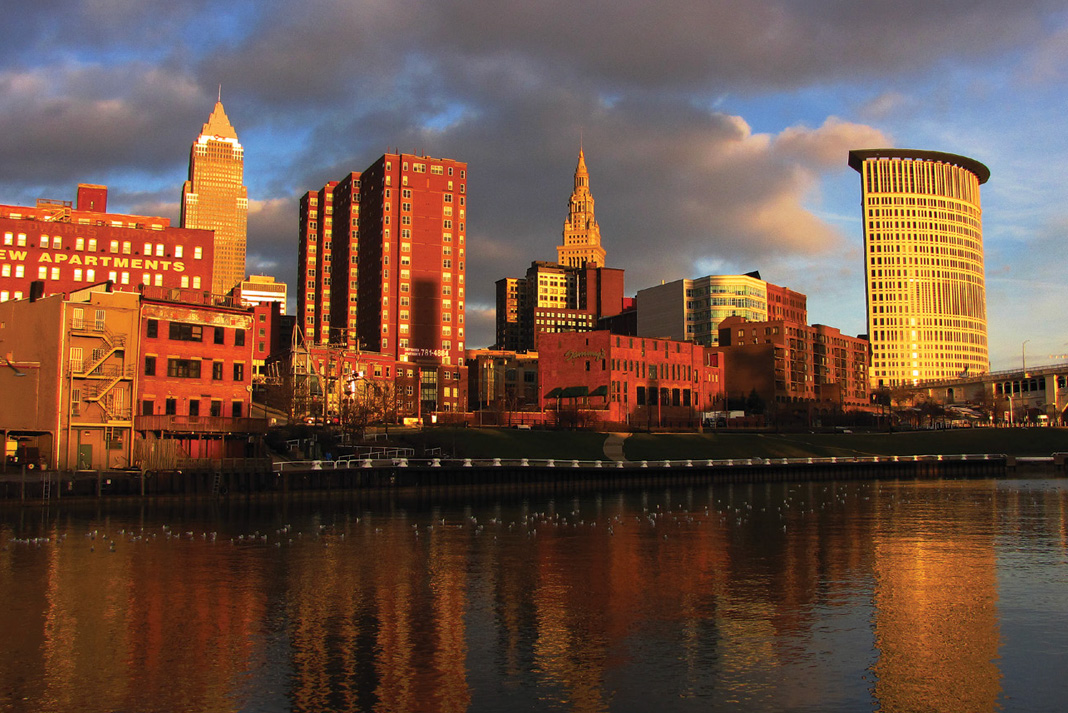
7 Polluted
Cleveland’s Cuyahoga River leads the Rustbelt Revival
As in most great stories of transformation, Cleveland’s greatest ignominy was also the beginning of its comeback. June 22, 1968, is the day the Cuyahoga River caught fire.
The event is immortalized in a folk song, Burn On, appears on cheeky “Burning River Surf Club” tourist T-shirts, and is remembered as the nadir of the period Clevelanders called their city, “The Mistake on the Lake.”
“Of course Cleveland hit rock bottom when they had a fire break out on the river, but that was a driving force in a very positive way,” says author Doc Fletcher, who profiled the Lower Cuyahoga among six urban Midwestern rivers for his new book Paddling & Pastimes.
“That got a lot of notoriety well beyond Cleveland and was a major factor in passing the Clean Water Act in the early ‘70s and the International Joint Commission for Great Lakes water quality. You can even say that it was a major driver for the creation of the EPA.”
We can all thank Cleveland for a cultural and political shift toward river stewardship that’s part of a larger trend of urban and environmental renewal across the so-called Rustbelt, and continent-wide.
Akron, Ohio, upstream of Cleveland on the Cuyahoga, is another city undergoing a multidimensional overhaul and turning a caring eye to its river. The source of the Cuyahoga’s worst pollution—spilling raw sewage into the river for more than a century—Akron’s undertaking a “big dig” to revamp its sewers and treat 100 percent of its outflow by 2027.
Fletcher observed the same pattern of renewal in Detroit, Minneapolis, Pittsburgh, Chicago and Milwaukee. Pittsburgh’s Allegheny River held only one species of fish in the 1950s; today it’s home to 53.
Dan Hudak, owner of River Cruiser Kayaking, regularly reels edible large- and smallmouth bass out of the Cuyahoga while guiding clients through the city’s industrial heartland. His three-hour tour from Harvard Avenue to Lake Erie takes you on a flashback to the late 1800s.
As you pass 900 acres of smoke-belching factories at ArcelorMittal, one of the world’s largest steel companies, you vividly witness the industrial bustle that once drove the river’s decline. But you’re floating on water that’s cleaner than it’s been in a century. Nearing the Lake Erie mouth you’re more likely than ever to see people out dipping paddles and oars into the water, or even swimming.
“Back in the ‘70s there were just motorboats and people partying and drinking. Now it’s the opposite,” says Hudak. Canoe and kayak registrations statewide doubled in a decade from 50,000 to over 100,000.
A citizens group, Friends of the Crooked River, rejoiced when two dams were demolished along the Cuyahoga’s length. The river had nine dams choking its 100-mile course until 10 years ago. Now four have been bypassed or pulled down, replacing brackish water with healthy, oxygenated flow and clearing the way for fish—and paddlers. All but two remaining dams are now slated for removal.
Friends of the Crooked River is turning the Cuyahoga into a state water trail, and publicizing the watercourse’s turnaround from a symbol of shame, to one of pride. In the words of spokesperson Elaine Marsh, “It’s becoming a real river again.”
Rather than turning his back on the water, Paul was inspired by his father’s love of canoeing and kayaking to pursue life with a paddle in hand. | Feature photo: Steve Rogers



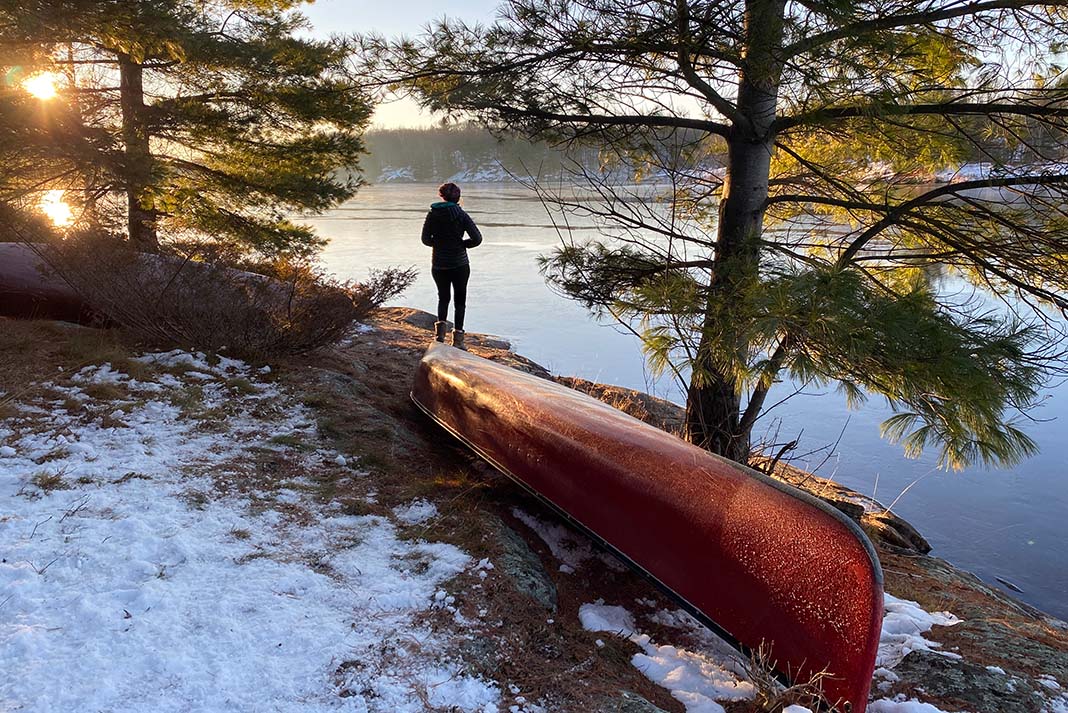
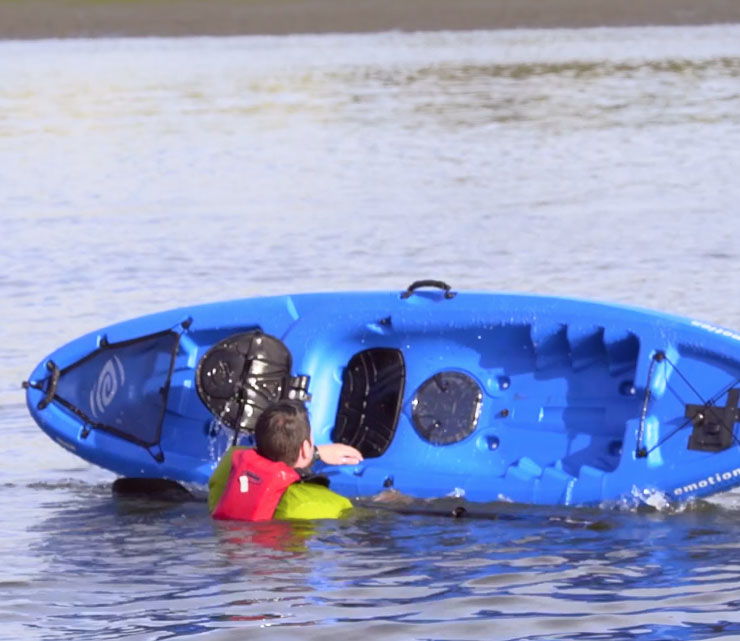
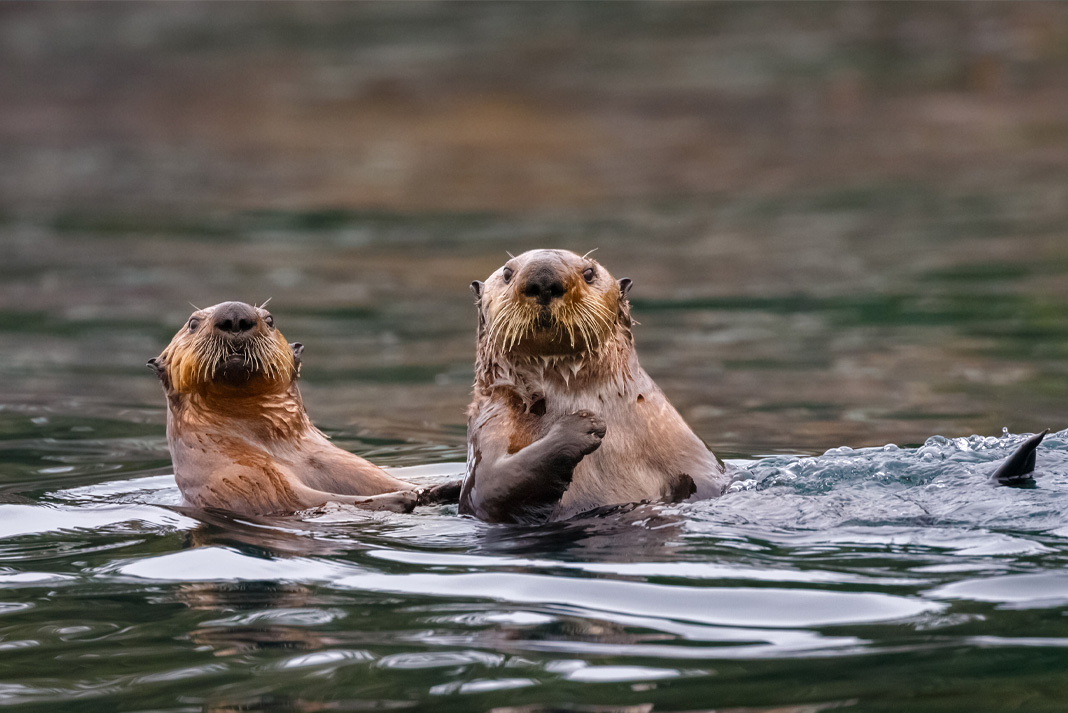
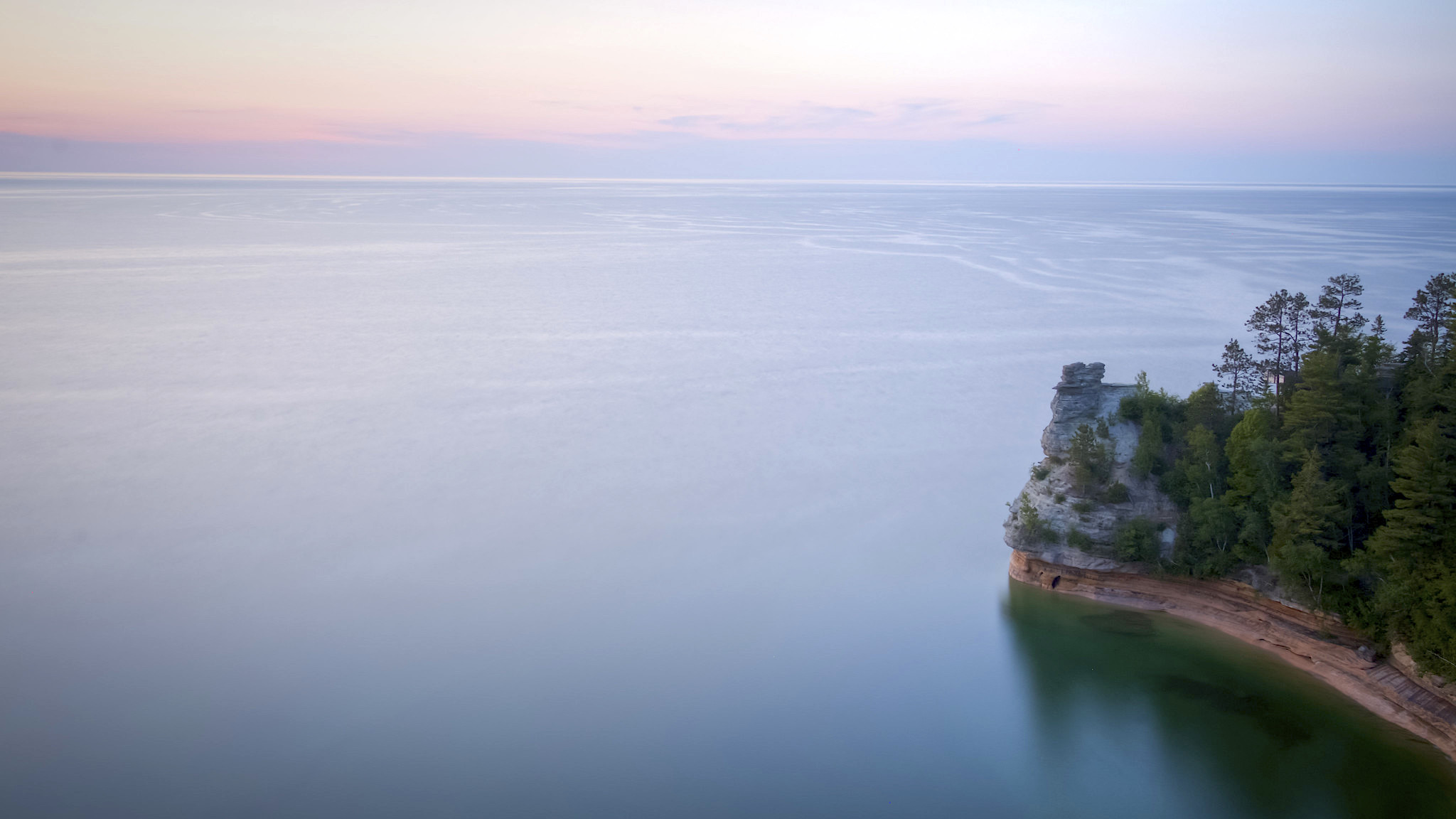
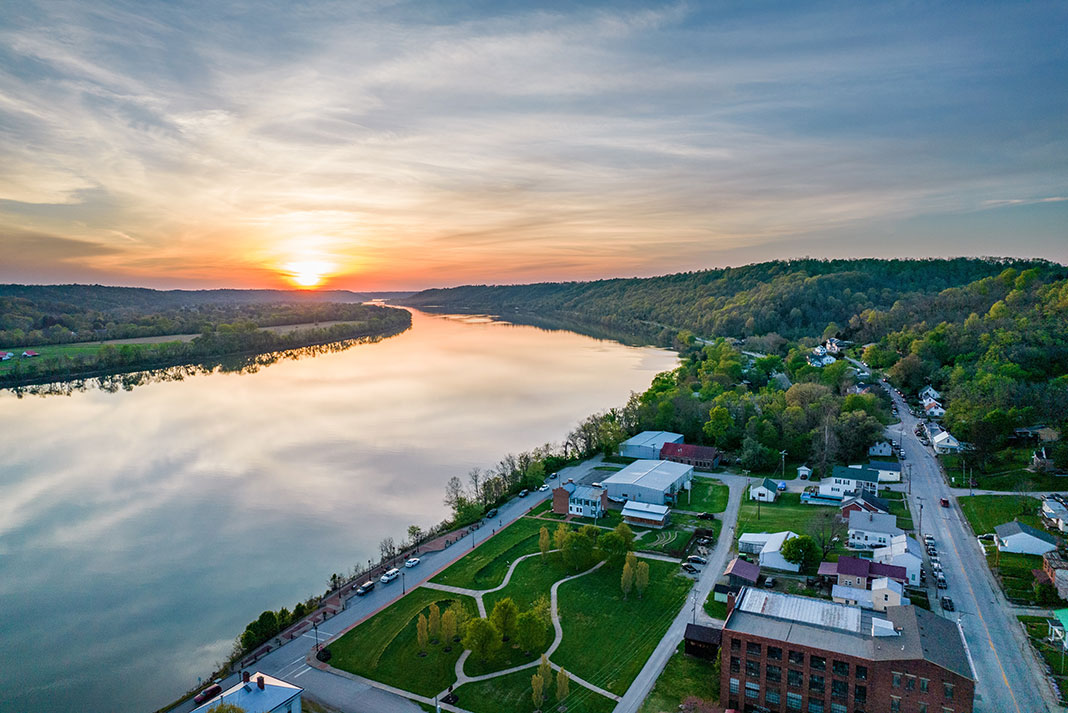
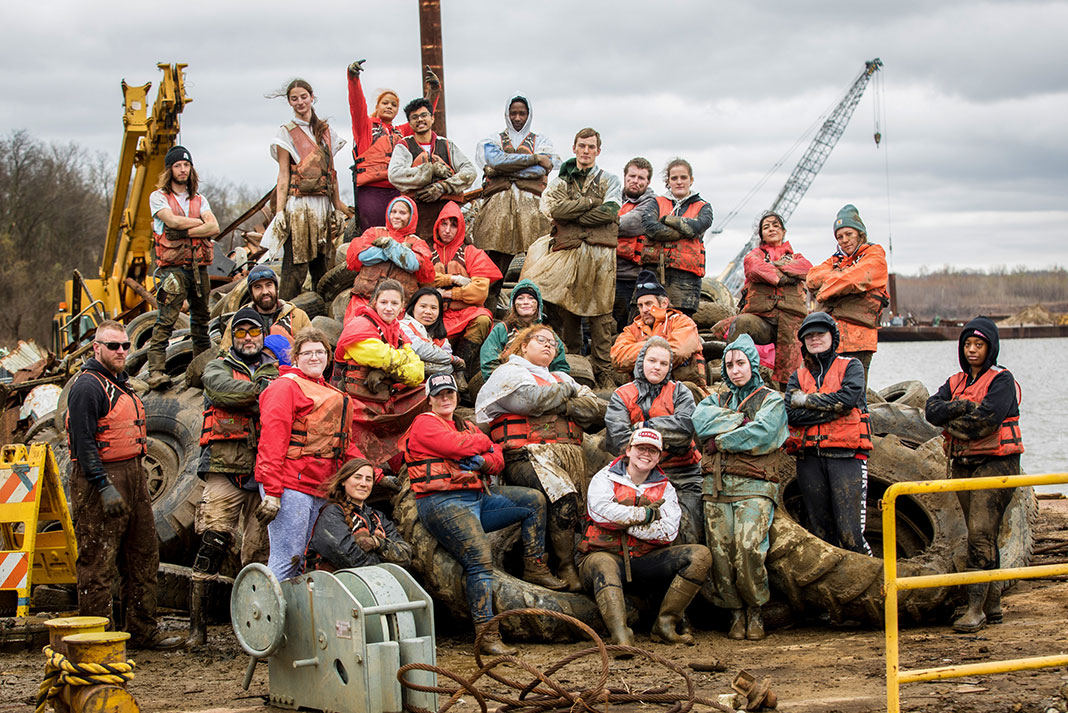
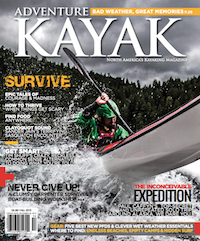 This article was first published in the Fall 2015 issue of Adventure Kayak Magazine.
This article was first published in the Fall 2015 issue of Adventure Kayak Magazine. 